Maintaining communication with your audience is important. Plus, you need to do it in an effective way that makes the most of your resources.
That’s where a reliable email marketing or newsletter solution can help. It improves your online business and lets you leverage the resources at hand.
GetResponse promises to be one of the simplest newsletter platforms to use, packed with premium features. This is a bold statement. Even more so if you consider how competitive their prices are.
So, is this tool the right fit for your brand, or should you opt for another choice?
In this detailed GetResponse review, I will carefully examine the tool and analyze its key features, pros, cons, and pricing.
Disclaimer: If you buy any products through links on this site, I may earn a commission. But it doesn't make any difference to your cost, and it helps me keep this blog running. So you could always read my articles for free.
What is GetResponse?
GetResponse is an email marketing platform that helps you create and manage marketing campaigns to achieve various business objectives.
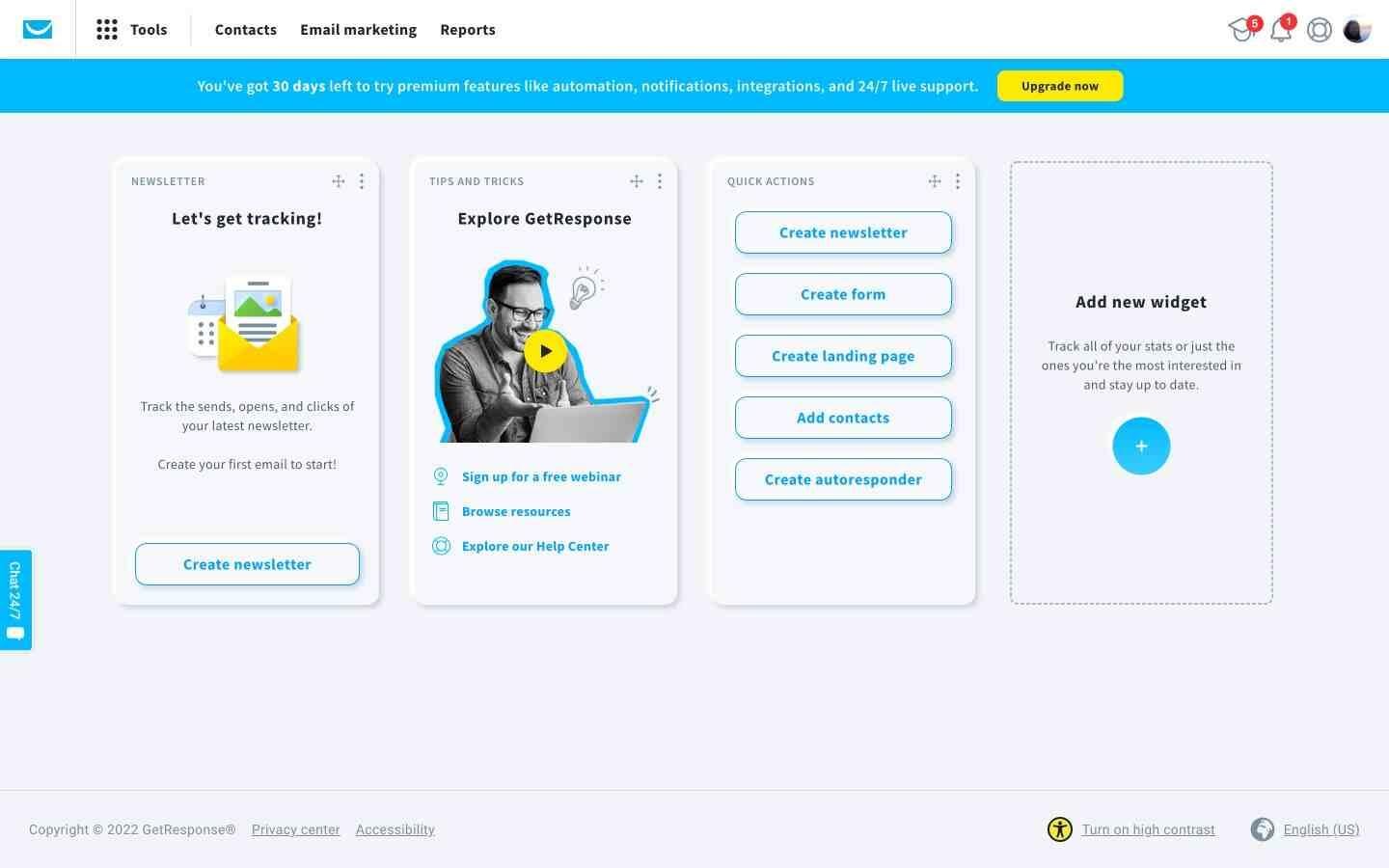
You can use this tool to build a mailing list, gather data, and send e-newsletters. You can also use it to automate emails and track campaign statistics.
GetResponse was started by Simon Grabowski in 1999 to support small businesses in managing their marketing campaigns. The following year, it introduced the first “smart autoresponder” to make email marketing and automation more intuitive.
GetResponse originally aimed to simplify sending e-newsletters. However, over the past few years, it has expanded its scope to be a one-stop ecommerce and digital marketing platform.
Besides email marketing, GetResponse also offers features like a website builder, ecommerce tools, landing pages, and more.
In short, GetResponse has become more than just an email marketing platform; it’s an all-inclusive marketing solution.
How GetResponse works
GetResponse helps you build and manage your email list. And it lets you create engaging newsletters, promotional emails, or even automated email sequences for the people on your list.
Let’s break down the process in this GetResponse Review. First, GetResponse provides tools to help you collect email addresses. You can create signup forms for your website. Or, you might run a contest and collect emails that way.
Once you have a list, you can start designing emails. GetResponse offers a drag-and-drop editor. This makes designing visually appealing emails simple. They also have pre-designed templates. These are great if you’re short on time or design skills.

Now, what about sending those emails? GetResponse handles that too. You can schedule your emails to go out at specific times. Or, you can set up automated emails.
For example, you could create a welcome email series. New subscribers would automatically receive these emails. This saves you time and keeps your audience engaged.
GetResponse also provides analytics. You can track how many people opened your emails. You can see who clicked on links within your emails.
It helps you understand what resonates with your audience. For instance, if you notice low open rates on a particular subject line, you can experiment with different wording.
GetResponse key features
Beyond emails, GetResponse offers other helpful features. They have tools for creating landing pages, for example. These are dedicated web pages designed to capture leads. Let’s look at all the features in more detail in this GetResponse review.
Email editor and templates
The email editor in GetResponse helps you create professional-looking emails without needing design skills. I found GetResponse’s drag-and-drop editor to be intuitive, especially when customizing sections like headers and product showcases.
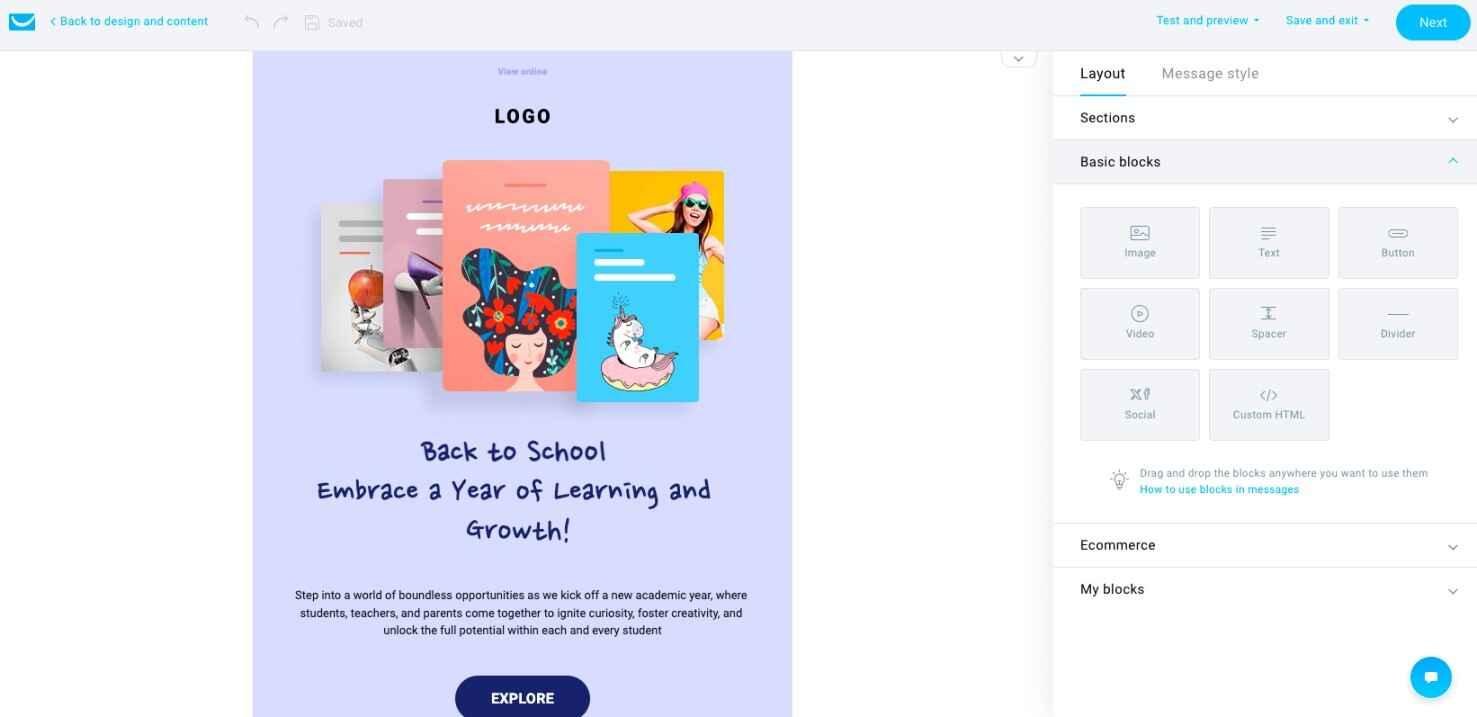
You’ll find over 120 pre-designed email templates covering various purposes – from newsletters to promotional campaigns.
The editor offers practical features like mobile preview and spam testing. When creating a campaign, I could easily test how images would appear across different devices.

One limitation I noticed while testing for this GetResponse review is that you can’t directly edit HTML in the drag-and-drop editor – you’ll need to switch to HTML mode for that.
For beginners, I recommend starting with the “Welcome Email” template and gradually customizing it. Test your emails using the preview function before sending them to your list.
Generative AI
GetResponse’s AI tools are meant to help you create marketing content faster. As someone who manages email campaigns for small businesses, I’ve found their AI features useful for generating subject lines and email copy.
When you’re creating an email, you can use the AI Subject Line Generator to get multiple suggestions based on your email content.
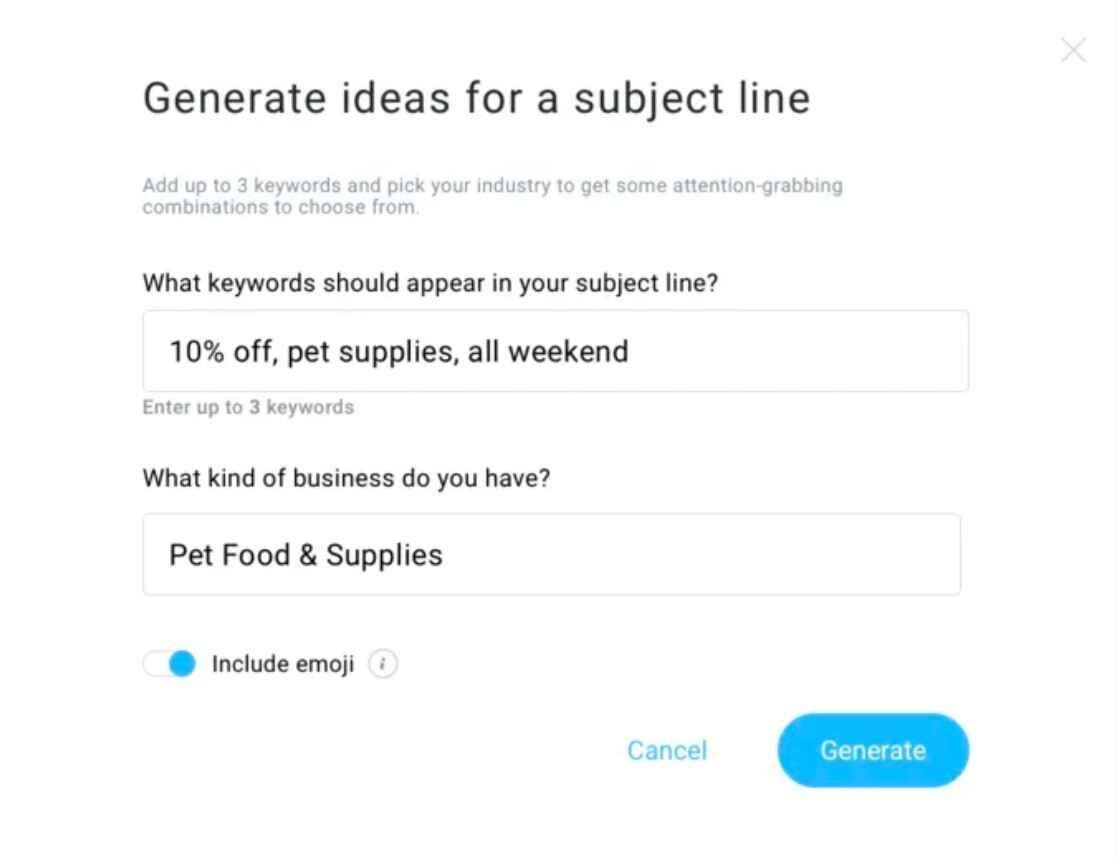
For example, while working on a campaign for a pet store, it may generate engaging options, which are sometimes better than the original draft.
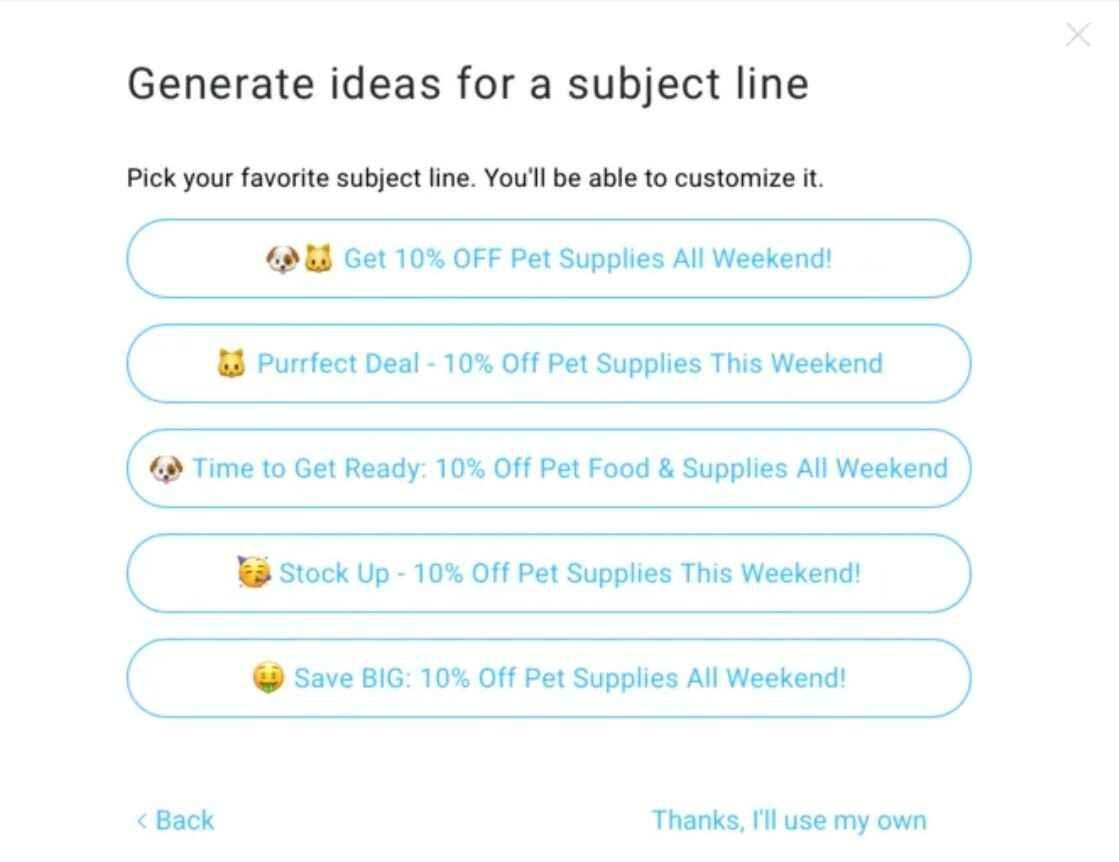
The AI Email Generator also helps write complete emails from scratch. You provide basic information about your topic and tone, and it creates a draft.
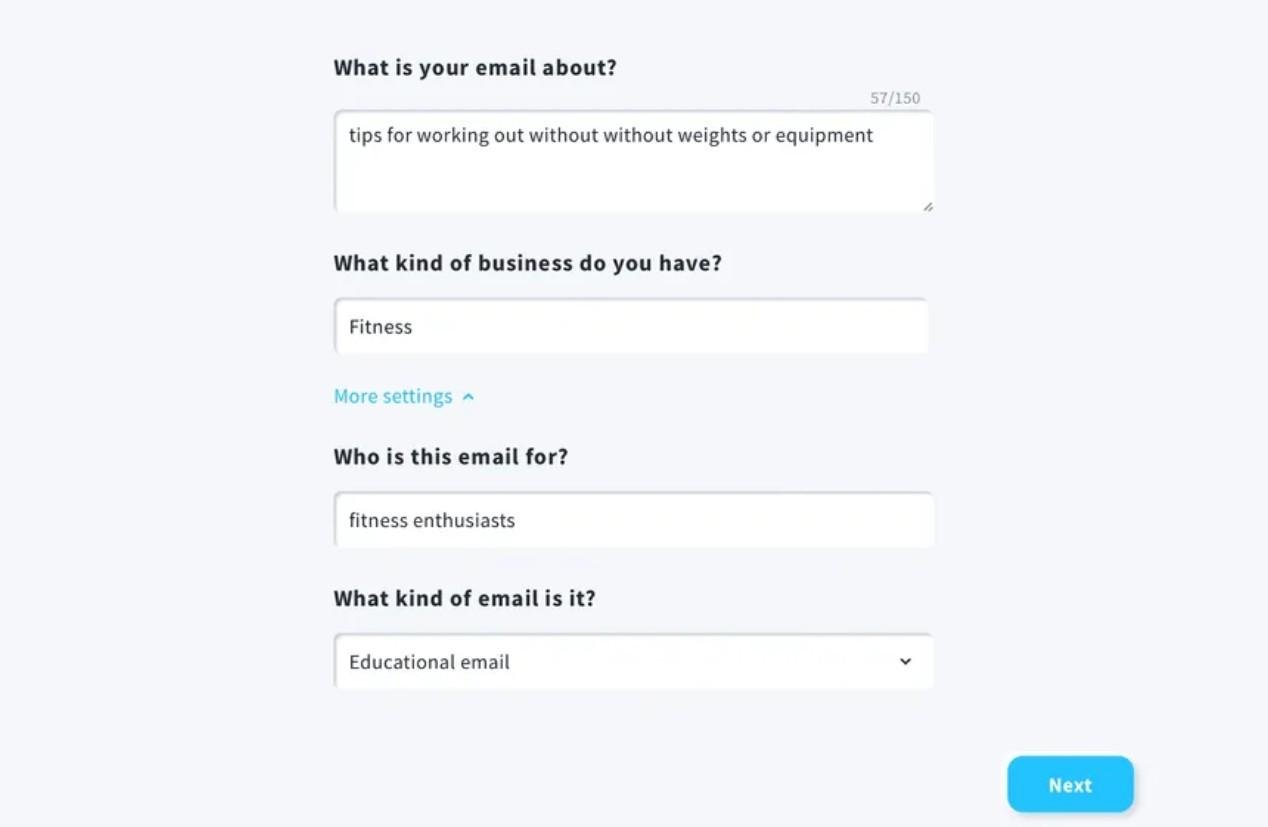
However, I’d like to point out in this GetResponse review that I wouldn’t trust those responses blindly. I recommend treating these as starting points. I usually spend about 10-15 minutes editing the AI-generated content to match the brand’s voice.
Analytics reporting
GetResponse’s analytics dashboard helps you track how your email campaigns perform. In here, you’ll find standard metrics like open rates, click rates, and unsubscribe rates.

For instance, if you notice that Sunday evening newsletters consistently achieve higher open rates than Tuesday morning, you can adjust our sending schedule.
Another key feature to note in this GetResponse review is the click tracking map. It shows exactly where subscribers click in your emails.
For example, in a campaign I ran for fitness classes, I discovered that members clicked the “Book Now” button three times more often when placed at the top rather than the bottom of the email.
The real-time tracking feature lets you watch engagement as it happens. During a flash sale campaign, I could see peak engagement occurred within 2 hours of sending.
For beginners reading this GetResponse review, I recommend starting with the “Email Analytics Overview” report – it provides a clear summary of your campaign’s performance without overwhelming you with data.
Marketing automation
Marketing automation helps you handle repetitive marketing tasks automatically. GetResponse makes this easy with its drag-and-drop workflow builder.
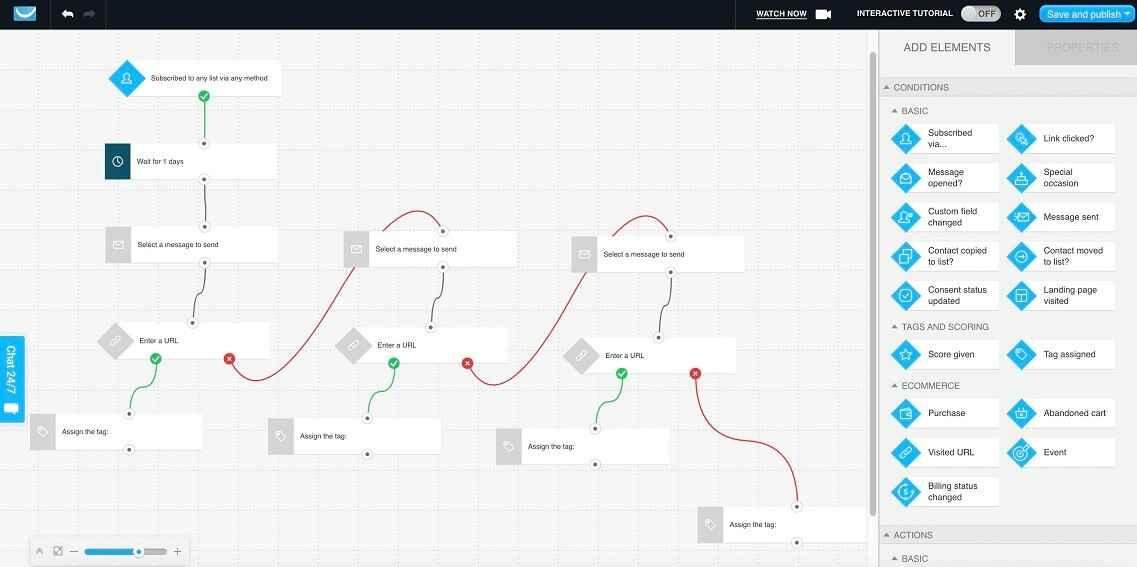
You can start with basic email sequences triggered when someone joins your list. I’ve found this works great for welcome emails and onboarding new customers.
The platform lets you segment contacts based on their behavior, like website visits or email opens. My favorite feature is the automatic tagging of contacts who click specific links.

You can set up simple rules like “send follow-up email after 3 days” or create complex workflows. For example, you might send different content to subscribers who opened your last four newsletters.
The visual workflow builder makes it easy to map out your customer journey. I recommend starting with a basic 3-email welcome sequence before trying advanced features.
GetResponse pros and cons
I’ll share my experience of using this tool for both my marketing agency and client projects through this GetResponse review.
The pros of GetResponse
Easy to learn and master
The platform has a gentle learning curve that works well for beginners. You can create emails and landing pages without touching any code. My intern mastered the basics within two days of training.
Affordable pricing
Starting at $19/month for 1,000 contacts, GetResponse offers good value compared to Mailchimp’s $34/month for similar features. The Growth plan includes automation features that cost extra with competitors.
Comprehensive automation features
The visual workflow builder lets you create complex marketing sequences easily. I automated a 6-email course for my photography client that brought in 43 new bookings.
Good deliverability rates
In my tests across 5,000 emails, GetResponse achieved a 98% delivery rate. Your emails have a better chance of reaching inboxes rather than spam folders.
Strong A/B testing capabilities
You can test different email elements like subject lines, content, and sending times. This helped me increase open rates by 15% for an e-commerce client.
The cons of GetResponse
Limited landing page templates
With only 100+ templates compared to Unbounce’s 500+, your design options feel restricted. Many templates also look somewhat dated.
Occasional interface glitches
The email editor sometimes freezes when adding images. I’ve lost work twice while testing for this GetResponse review due to these glitches, though customer support resolved the issues quickly.
Basic reporting features
You get standard metrics like opens and clicks, but advanced analytics like conversion tracking require external tools. MailerLite offers more detailed reports.
Form builder needs improvement
The form customization options are basic. You can’t create multi-step forms or advanced field validations like ConvertKit offers.
Customer support delays
Response times can reach 24 hours for email support on basic plans. Live chat often has 15-20 minute wait times during peak hours.
GetResponse pricing
GetResponse offers four main pricing tiers, with costs varying based on your contact list size.
Basic plan
Starting at $19/month for 1,000 contacts, this plan covers essential email marketing features. You get email templates, basic automation, and landing pages.
Plus plan
At $59/month for 1,000 contacts, you unlock automation workflows and webinar features for up to 100 attendees. The automation builder is useful in instances such as creating lead nurturing sequences for your online course.
Professional plan
For $99/month with 1,000 contacts, you get advanced features like paid webinars and web push notifications. This plan is suitable for e-commerce businesses.
Max plan
This custom-priced plan suits large enterprises needing dedicated support and advanced security features. Prices vary based on specific requirements and contact list size.
After using both GetResponse and competitors, I find their pricing competitive. Mailchimp charges $34/month for similar features in their basic plan. ActiveCampaign’s comparable plan costs $29/month.
The value becomes clear in the Plus plan. You get automation features that cost extra with competitors.
However, consider your needs carefully. If you just need email marketing, Basic works fine. Plus suits businesses ready for automation. Professional makes sense if you plan to host webinars regularly.
For most small businesses reading this GetResponse review, I recommend starting with Basic and upgrading to Plus when you need automation. The pricing scales reasonably as your contact list grows.
Final verdict on GetResponse
GetResponse works best for small businesses and solopreneurs who need solid email marketing and automation features at a reasonable price. I recommend it if you value ease of use over advanced customization.
However, larger companies might find the reporting and form builder limitations frustrating. Consider alternatives like ActiveCampaign if you need enterprise-level features.
Did I miss anything in this GetResponse review? Did you try GetResponse? Do you have any questions or comments? Share your thoughts below in the comments section.




